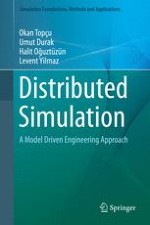2016 | OriginalPaper | Buchkapitel
5. Conceptual Modeling
verfasst von : Okan Topçu, Umut Durak, Halit Oğuztüzün, Levent Yilmaz
Erschienen in: Distributed Simulation
Aktivieren Sie unsere intelligente Suche, um passende Fachinhalte oder Patente zu finden.
Wählen Sie Textabschnitte aus um mit Künstlicher Intelligenz passenden Patente zu finden. powered by
Markieren Sie Textabschnitte, um KI-gestützt weitere passende Inhalte zu finden. powered by
